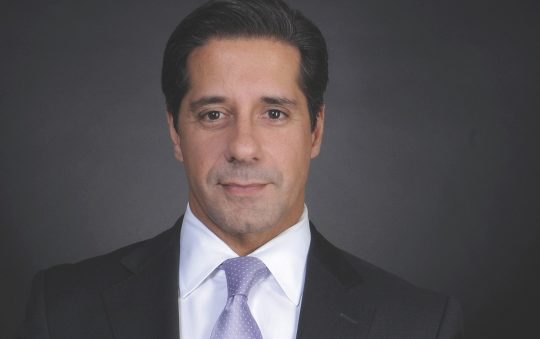
My column, “Clinton’s Budget and African Americans” (August 1994) examines contradictions in President Bill Clinton’s proposed budget for fiscal 1995. It is re-run here, because as with his wife in 2016, the vast majority of Black voters considered him a champion for their rights. Actually, he was not. His proposed 1995 budget reminds us Blacks must be forever vigilant and keenly aware of which policies serve their best interests. Since the vast majority of Blacks support Hillary Clinton’s candidacy for president, it is very important they do so critically and hold her to a higher standard than they did her husband:
President Clinton’s budget for fiscal 1995 reportedly attempted to balance the goals of deficit reduction and expanding social policy. Preliminarily, it projects a reduction of the deficit and increases funding for programs that disproportionately serve African Americans.
However, these proposals are not without negative impact for the African American community. For instance, the most economically disadvantaged Blacks, such as public housing residents, may lose under the Clinton budget because programs they rely on are cut substantially. To determine the potential implications of the president’s budget within the African American community, the budget must be examined in its entirety.
Anti-Poverty Programs: Clinton’s anti-poverty entitlement programs such as Aid to Families with Dependent Children (AFDC) and SSI (Supplemental Security Income) are recommended for an $18.5 billion increase. Clearly, this has serious implications since 33% of African American households have incomes below the poverty level. But the majority of anti-poverty programs will not, under Clinton’s budget, increase in real terms. Certain programs such as Vocational Rehabilitation, State Grants, Medicaid, Food Stamps, AFDC and SSI are slated to increase on the average of 8%. Yet, none of these programs actually increase when considering inflation and projected caseloads. Moreover, some anti-poverty entitlement programs are also being recommended for reduction. (It is widely believed Hillary advocated for these reductions.)
Clinton proposes to reduce spending for unemployment insurance by approximately $3.4 billion, for child nutrition programs by $78 million and for low-rent public housing loans to public housing authorities by $50 million. Overall, he proposes more increases than cuts, but his proposed cuts in loans made to public housing authorities and to the Low Income Energy Assistance Program may increase the number of African Americans without adequate shelter. This would expand the homeless population and counter the impact of Clinton’s proposed budget increases to support homelessness and other anti-poverty programs.
Education: Almost all (95%) Black children attend public schools and approximately half of them are living in poverty. According to the Clinton budget, funding for education for the “Disadvantaged Program” would be $186 million. Federal funding for special education is recommended for a $24 million increase and Head Start for a $700 million hike. Clinton also proposes to increase funding for historically Black colleges and universities and programs to increase the number of African Americans pursuing degrees in higher education, by $24 million. But cuts in funding for vocational and adult education, as well as library programs and student financial assistance programs, will clearly hurt African Americans.
Job Training: Overall funding for job training programs is recommended for a $532 million increase. Job Corps will receive an additional $117 million, Summer Youth Employment, $168 million; School to Work Initiative $100 million and One-Stop Career Shopping Centers that offer comprehensive job placement service to the public will increase by $200 million.
However, Clinton’s proposed cuts in two programs could cancel out much of the above-cited benefits to African Americans. A cut of $15 million is proposed for the Older American Employment Program and Youth Initiative Grants for the Disadvantaged that specifically serve inner-city youth, a $80 million cut. Older African Americans rely more heavily than whites on employment as a source of employment. Similarly, unemployment rates for young male Blacks nearly triple the national average.
Housing: African Americans constitute 44% of all public housing residents. Clinton proposes to increase funding for housing vouchers used by low-income persons by about $1.3 billion. But he also wants to cut over $2 billion in program funding used to build, modernize and rehabilitate public housing for poor families and the elderly. The Clinton Administration’s rationale for redirecting resources from public housing to subsidizing private housing is that low-income persons should have more choice regarding where they live. However, this approach could, generally, exacerbate problems for African Americans. Therefore, much scrutiny and oversight must accompany the president’s proposal.
Urban Infrastructure, Economic and Community Development: The Administration proposes to increase mass transit funding for local public transportation systems and highways by $1.1 billion. The emphasis on enhancing economic development opportunities should benefit African Americans including $500 million to fund Urban Empowerment Zones to support the financing of capital projects. Smaller minority business assistance increases are also proposed.
Criminal Justice and Legal Services: Clinton proposes changes to criminal justice programs including a Crime Control Fund that would support community policing and alternative crime control programs. Also, a $217 million increase for a National Control of Demand Drug Strategy that commits $448 million for drug abuse prevention and $360 million for treatment.
While much of Bill Clinton’s budget may have benefited African Americans, much of it did not; proposed increases were undercut by substantial decreases. Now, with Hillary seeking the presidency, vigilance and oversight are necessary to ensure her priorities serve the best interests of the African American community.
l.aubry@att.net







